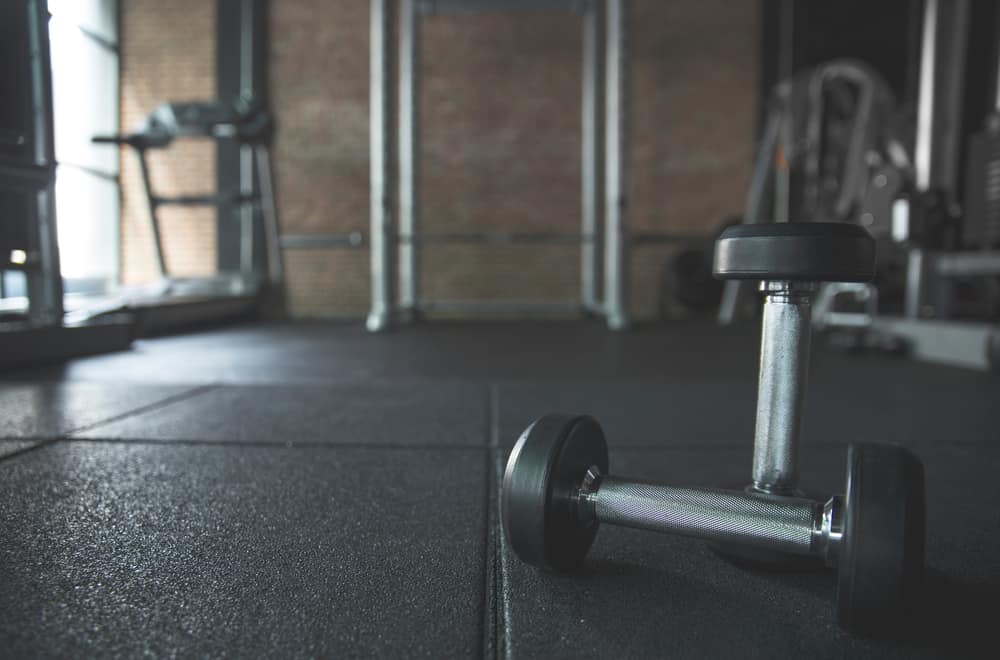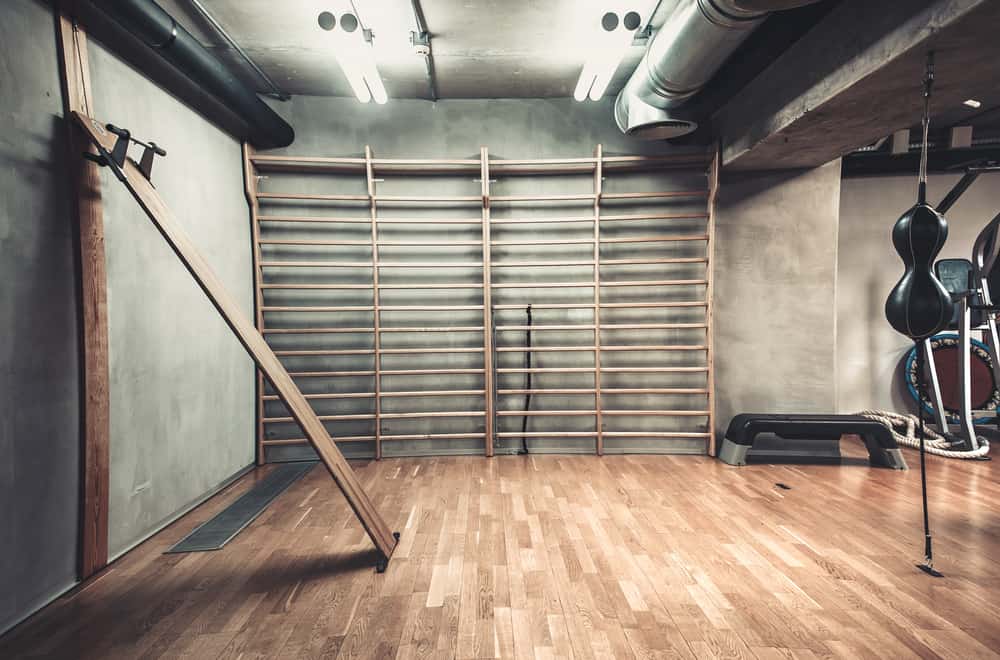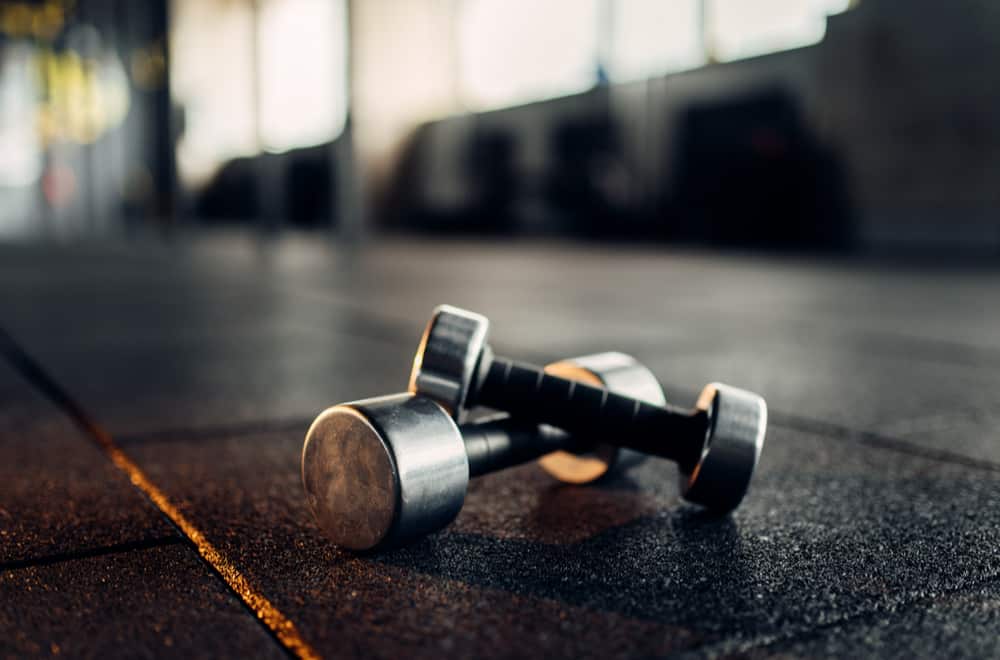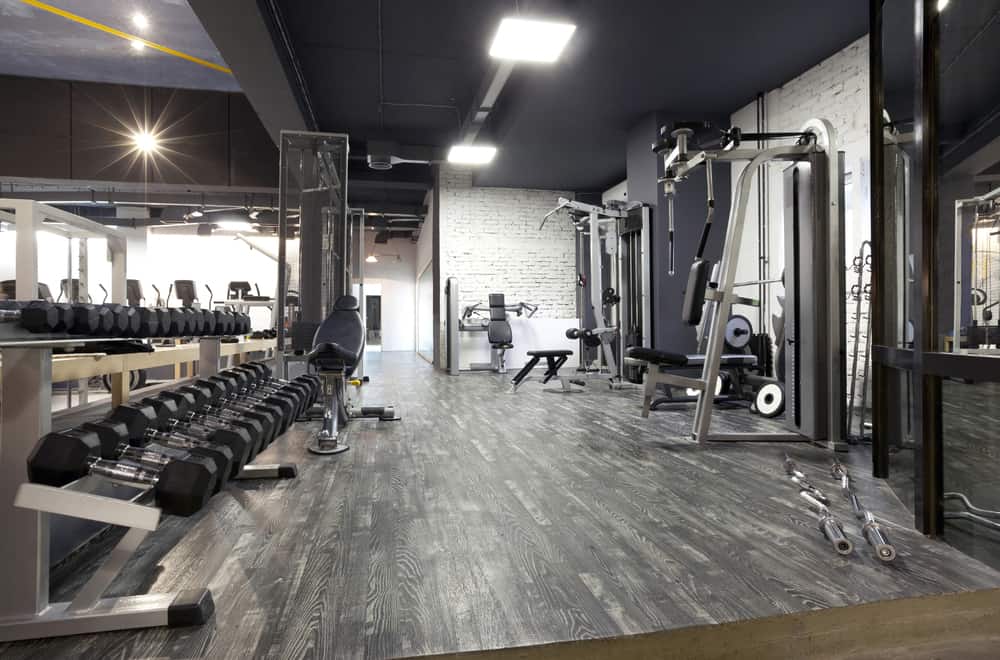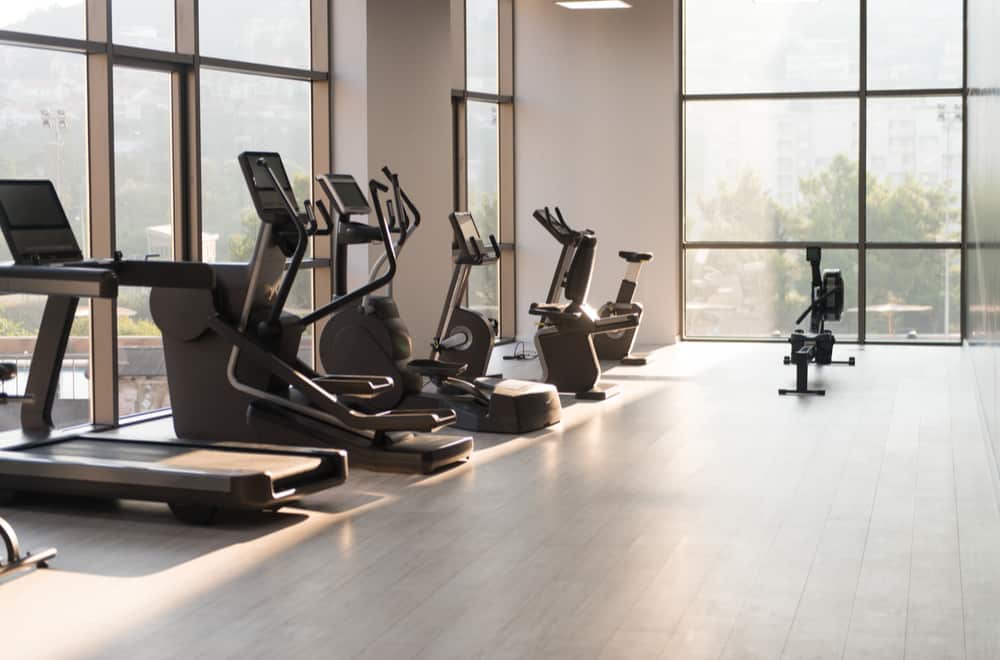If you’re thinking about installing a gym at your home, there’s so much you need to think about. There are the machines and equipment, the décor, the budget – and then there’s something that often gets overlooked: the floor.
Choosing the right floor for your gym is one of the most important elements, so to help make sure you get it right, here we discuss the question, which option is best for gym flooring, hardwood, vinyl or rubber?
Table of Contents
Different needs, different solutions
When it comes to choosing the best floor for your home gym, you have several possibilities, but because no home gym is the same, it’s impossible to give a definitive answer as to which is the best.
For example, when deciding which type of surface to go for, you will have to take into account the type of exercises or workout routines you plan to do in your gym.
If you like to lift heavy weights, you’ll need something tough and durable whereas if you’re more into plyometric exercises, something that offers good shock absorption is a must. On the other hand, the needs of someone who does more yoga or Pilates will be different again.
Similarly, the equipment you plan to install or use in your home gym will affect the best type of floor to install. Do you plan to install heavy machines like a treadmill or an elliptical machine, or will your gear be restricted to lighter items like kettlebells and step platforms?
Away from the exercise side of things, other factors like the type of floor you will be laying the gym floor over and where in the house the gym will be can also make a difference.
The best type of floor to lay over concrete might be different from the kind of thing you can lay over carpet – and the best floors for a garage or basement gym might not be the same as the best choice for an upstairs one.
Other factors to bear in mind
Besides the type of workout you plan to do in your gym and the physical constraints of where you install it, there are also several other factors to bear in mind. So let’s think about those now.
Permanent or temporary gym
There’s a big difference between fitting a room out as a relatively temporary workout area and setting up a gym that will be there as long as you stay in the house, and the surface you choose reflects this.
A temporary exercise area could require nothing than a simple mat in the middle of the room whereas a more permanent installation requires something more durable.
Ease of installation
Will you be installing the floor yourself or will you be paying someone to do it? If you’re doing it yourself – and depending on your level of DIY expertise – this may affect your choice or surface.
Ease of cleaning and maintenance
Different surfaces require different amounts of care and maintenance, so thinking about how much time you’re willing to spend on this will help you choose the best material.
Durability
Different materials have different lifespans, and some can stand up to more intensive use. Will you be in your gym every day doing heavy workouts or are you a more casual gym user? If your gym won’t see such frequent use, you might not need the most heavy-duty floor.
Traction and safety
This is related to the type of activities you prefer, but the amount of traction a gym floor offers may be important to you. Also, does it get slippery when wet?
Budget
Of course, the amount you have to spend on your gym will play a part in deciding which type of floor to go for. You may think a certain type of floor would be perfect for your needs, but if it’s beyond your reach financially, you may have to settle for something else.
This means weighing up your priorities and balancing them with the prices of different gym floor solutions will be an important part of your decision-making process.
Different types of gym floor
So having talked about the most important factors that will determine which floor is best for you, now let’s have a look at the main contenders and see how they match up.
1. Rubber floor
Pros
Rubber floor is an extremely popular option both in home gyms and public ones – and for good reason. You can lay it over any surface, including bare concrete or carpet, making it a convenient option in almost any setting.
Rubber is extremely tough and durable – it will last as long or longer than possibly any other type of surface – and it’s capable of supporting any kind of heavy gym equipment.
Another positive to choosing rubber is that it is highly shock-absorbent – and it also comes in varying thickness, depending on your needs.
Rubber flooring comes in different formats, including tiles, mats and rolls, and all of them are relatively easy to install.
For a permanent gym, you can lay a roll of rubber, and it won’t need to be replaced for upwards of ten years. Alternatively, a simple rubber mat can be placed in a room to convert it into a more temporary sports area.
This material is also easy to clean, it’s water-resistant – something that’s important in a room where you’re likely to be sweating a lot – and it’s also antimicrobial.
Cons
On the downside, rubber is heavy, and especially if you’re installing rubber rolls, you’ll probably need help carrying and fitting it. It also doesn’t provide much insulation, so if you install it on a cold concrete floor, the rubber will be cold to the touch.
In terms of cost, rubber is not the cheapest, so not everybody will be willing to spend the money required.
Rubber can be a bit smelly too, especially when it’s new – but this is a problem that disappears with time.
The verdict
Overall, rubber has many great attributes as well as a few drawbacks. It would be the perfect option if you have some money to spend and hope to create a high-quality permanent gym in your home.
However, for more casual home gyms, this kind of surface might be a bit pricey.
2. Vinyl floor
Pros
Vinyl flooring shares many of the advantages of rubber flooring. It’s water-resistant and easy to clean, requiring little maintenance, and it’s also resistant to mold and mildew, making it a suitable option for places with less ventilation – like basement gyms.
Like rubber, vinyl is also tough and durable, so it should last a long time. However, at the same time, it’s more suited to a home style and will look less out of place than a rubber-floored gym inside your house. It also comes in a far wider range of styles and colors, so it’s more stylish.
Vinyl is easy to install, and compared to rubber, it’s also lighter, so it’s less of a problem to transport. Compared to other materials, vinyl can also be one of the cheapest – although more expensive, higher-quality versions also exist.
Cons
One of the main downsides of vinyl compared to rubber is that it doesn’t offer the same amount of shock absorption. This might not be a problem if you’re more into activities like yoga, but for the kind of exercise that pounds your joints, this might not be the right choice.
Another downside is that, despite its toughness, vinyl can be pierced or damaged by sharp objects.
Finally, it gives off VOCs, especially when new.
The verdict
Vinyl is a practical and often affordable option that’s easy to install and effortless to maintain. This makes it ideal for many home gyms – but if you enjoy high-impact activities, this might not be the right option for you.
3. Hardwood floor
Pros
Perhaps the most obvious, undeniable advantage of having a hardwood floor in your home gym is the way it looks. The industrial feel of something like rubber might be ok in a public gym, but many people won’t enjoy having it in their homes.
Wood is also suitable for all kinds of activities, and by giving it foam backing, it can even provide the kind of shock absorption required for high-impact activities. It’s well suited to sports like kickboxing as well as dance.
Wood is a good choice for well ventilated rooms where mold and mildew aren’t an issue.
Cons
With wood, you’ll need to be careful how you treat it since it can scratch or splinter easily, especially with things like weights – you need to place something over it to protect it if you don’t want your weights to damage it.
Another issue is that wood gets slippery when wet, so this could become a safety issue, depending on the kind of workout you enjoy.
Wood is also not a cheap option, and of the three, it’s probably the most expensive to install – it requires the most skill to fit it, and most people will probably want to pay for a professional to do it.
Of the three, it also requires the most maintenance, so this is another point to bear in mind.
The verdict
Wood is the ideal surface for people who care about the way their home gym looks, and it’s well suited to activities like kickboxing and dance. It’s also ideal for Pilates and yoga.
Wood can also be used for gyms with machines or other equipment, but you’ll need to take steps to protect it since it can easily be damaged.
Plenty of great options for different requirements
As you can see, all three surfaces have their advantages and disadvantages, and all three would be the most suitable choice in different situations.
The key to choosing is to think about the kind of gym you want to build and the kind of exercise you want to do in it and then to find the material that best fits your needs.
